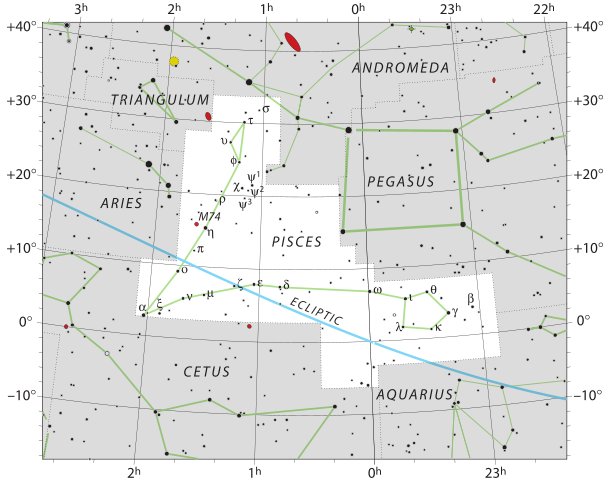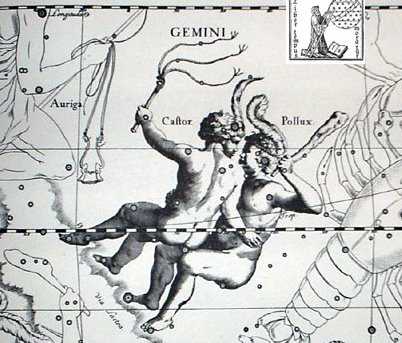|
... At the beginning of 44 B.C. - when Ceasar was still alive - the Senate decided to raise statues of him in all the temples and to sacrifice to him on his birthday in the month Quintilis, which in honour of him was renamed July. He was raised to the status of a god (among the other gods of the state) under the name Jupiter Julius.
Marcus Antonius, who this year was consul together with Ceasar, became high priest and responsible for the ceremonies. In the middle of February, at the time of the old feast of Lupercalia, he ran around naked (except for a girdle - like a maro), and whipped the Roman ladies with thongs made from goat-skin, in order to promote ('kick' - Rei), their fertility.
Surely there must be some connection with the she-goat Amalthea (Capella) who suckled Zeus. But we cannot repeat all written about her earlier in this investigation. It is enough to remember:
... The Akkadian Dil-gan I-ku, the Messenger of Light, or Dil-gan Babili, the Patron star of Babylon, is thought to have been Capella, known in Assyria an I-ku, the Leader, i.e. of the year; for, according to Sayce, in Akkadian times the commencement of the year was determined by the position of this star in relation to the moon at the vernal equinox ...
Instead , to the point: The name of the month February must be based on februa, the name of the whiplashes made from goat-skin ...
So, if Caesar had remained a king on earth instead of being forced (he did not like it) into the habits of a god, he would have survived I think ...
Once July was Quintilis - month number 5 (as in 'fire') - but this was before Julius Ceasar became a living god. If 'land' is to be counted as 7 months, then August and September (literally the '7th month') have to be added.
The old year ended with February (which is the only month which is 'cut short') and the new year was beginning with March:
Februa, also Februatio, was the Roman festival of ritual purification, later incorporated into Lupercalia. The festival, which is basically one of Spring washing or cleaning (associated also with the raininess of this time of year), is old and possibly of Sabine origin. According to Ovid, Februare as a Latin word which refers to means of purification (particularly with washing or water) derives from an earlier Etruscan word referring to purging.
The Roman month Februarius ('of Februa', whence the English February) is named for the Februa/Februatio festival, which occurred on the 13th to 15th days of this Roman month. A later Roman god Februus personified both the month and also purification, and is named for them. Thus, the month is named for the festival and not for the god ... (Wikipedia)
The purification (cleaning) ritual indicates where the old is changed to something new:
... Behold what was done when the years were bound - when was reached the time when they were to draw the new fire, when now its count was accomplished. First they put out fires everywhere in the country round. And the statues, hewn in either wood or stone, kept in each man's home and regarded as gods, were all cast into the water. Also (were) these (cast away) - the pestles and the (three) hearth stones (upon which the cooking pots rested); and everywhere there was much sweeping - there was sweeping very clear. Rubbish was thrown out; none lay in any of the houses ...
... Under Mosaic law, a mother who had given birth to a man-child was considered unclean for seven days; moreover she was to remain for three and thirty days 'in the blood of her purification', which makes a total of 40 days ....
The dead old king was carried on a litter by 3 slaves and the absence of the 4th made the arm of Caesar hang down to touch the earth. The sign of touch is here evidently the same as when the Fly touched the end of the Ewe or when the februa whipped the Roman ladies, it indicated the cause which would bring about the desired effect.
The Square of Pegasus could represent the litter of the dead king. If his (right) hand is hanging down, then it ought to be reaching out for the pentagonal (earth oven) form below:

The time is about a week before spring equinox, i.e. about the time of the Ides of March.
31 (Jan) + 28 (Feb) + 14 (Mar) = 73 = 365 / 5 ... |





